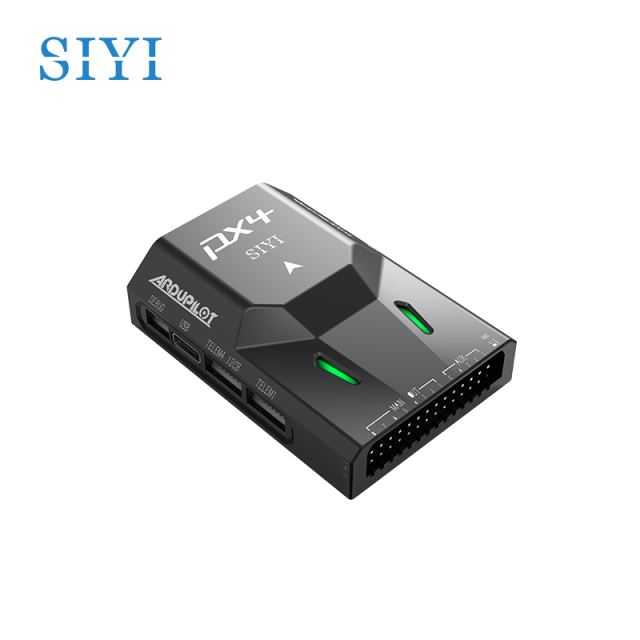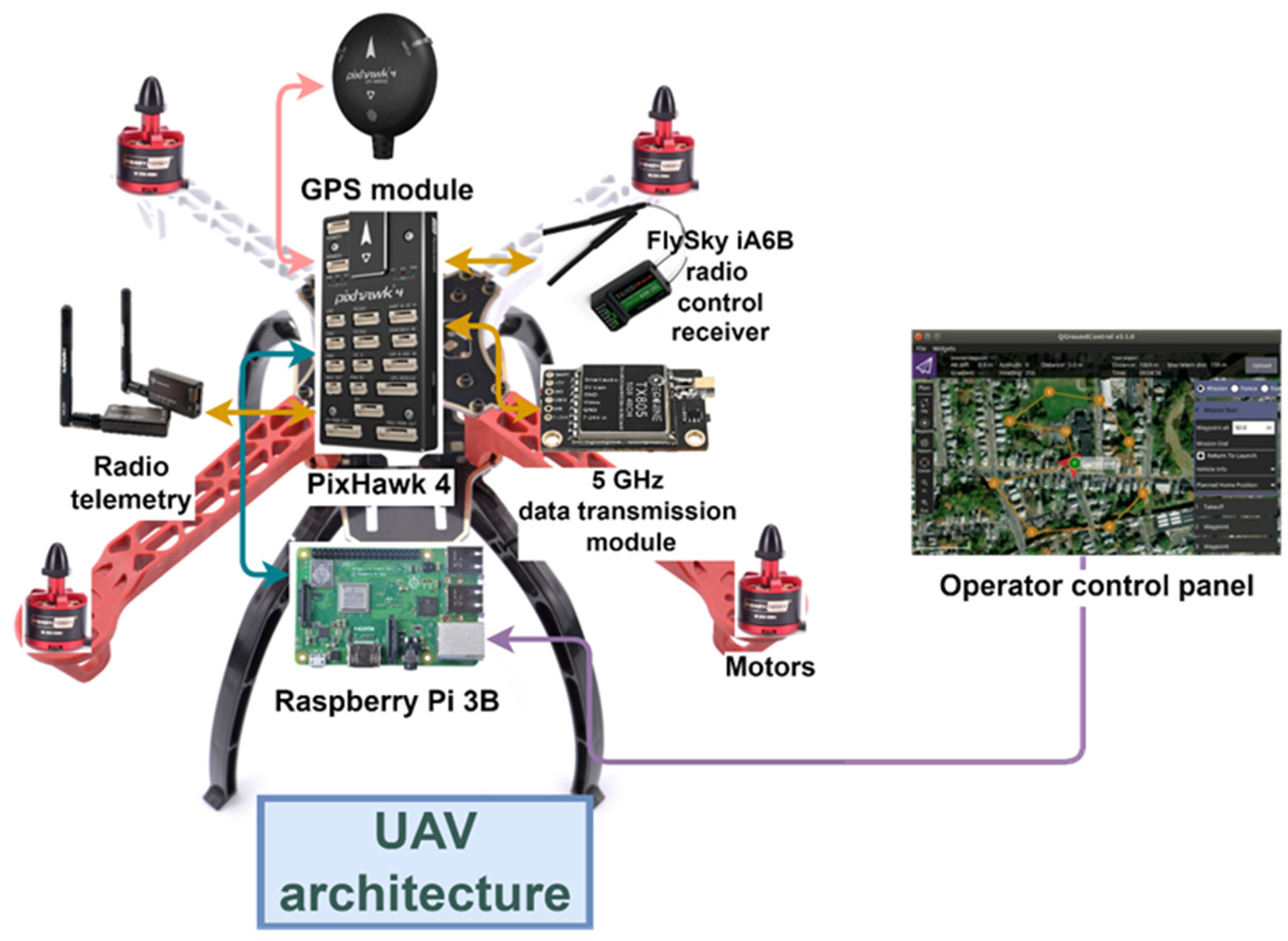SparkNavi Drone Flight Controller and GNSS/INS Made in Taiwan: Cutting-Edge Solutions for UAVs
SparkNavi Drone Flight Controller and GNSS/INS Made in Taiwan: Cutting-Edge Solutions for UAVs
Blog Article
Recognizing the Vital Attributes and Functions of a Drone Trip Controller for Ideal Aerial Performance
The flight controller acts as the pivotal component in a drone's style, coordinating its motions and making certain stability with an advanced interaction of data and sensors processing. Comprehending the essential attributes and features of these controllers is important for optimizing airborne efficiency, as they dictate not just navigational precision yet likewise overall safety and integrity. With improvements in innovation, the landscape of trip controllers is quickly progressing, prompting a better assessment of what genuinely specifies optimal performance in this vital system. What ramifications do these growths hold for both enthusiasts and specialists in the area?
Overview of Flight Controllers
When exploring the world of drone innovation, recognizing trip controllers is crucial for both experts and enthusiasts alike. Flight controllers act as the mind of the drone, managing its activities and guaranteeing security during trip (SparkNavi drone flight controller and GNSS/INS made in taiwan). They refine data from different sensing units, including gyroscopes, barometers, and accelerometers, to preserve stability and respond to pilot inputs successfully
The style of flight controllers can vary dramatically, ranging from fundamental variations designed for entry-level drones to sophisticated systems furnished with innovative features for expert applications. The combination of GPS capacities enables accurate navigation and positioning, while programmable firmware enables customers to customize flight qualities to fit their certain demands.
Moreover, flight controllers are critical in helping with interaction in between the drone and the remote, making it possible for real-time changes and telemetry data transmission. Understanding the different types of flight controllers, including multi-rotor, fixed-wing, and hybrid systems, is essential for selecting the suitable model for a given application. Eventually, an extensive grasp of flight controllers not only enhances the flying experience but also takes full advantage of the performance and security of drone operations.
Key Functions of Trip Controllers
Trip controllers play a pivotal duty in managing a drone's trip dynamics by carrying out several key features that make sure stability and responsiveness. One of the main functions is the stablizing of the drone's alignment and altitude. This is accomplished with the combination of numerous sensors, consisting of measures, accelerometers, and gyroscopes, which constantly keep an eye on the drone's placement and activity.
.png)
An additional crucial function is the processing of control inputs from the pilot or autonomous systems. The flight controller interprets these inputs and adjusts the drone's motor speeds as necessary to attain the wanted flight course. This includes handling yaw, pitch, and roll, which are crucial for maneuverability.
Furthermore, flight controllers are outfitted with foolproof devices. These features are developed to respond to vital situations, such as reduced battery levels or loss of signal, by initiating predefined activities like returning to the launch point or floating in position.

Important Functions to Consider
When selecting a drone trip controller to make certain optimum performance and integrity,Countless essential features must be taken right into account. One crucial element is the controller's handling power, which determines its capability to deal with intricate flight algorithms and real-time information processing. A higher handling ability enhances responsiveness and stability during trip.
One more essential feature is the number of supported trip modes. A versatile flight controller must supply different settings, including acro, elevation hold, and GPS-assisted settings, satisfying various pilot skill levels and functional scenarios. In addition, the visibility of integrated security features, such as fail-safes and geofencing, can substantially boost operational safety.
Compatibility with various communication protocols is also important, as it makes certain seamless integration with various other gadgets and peripherals, such as remote controllers and telemetry systems. The controller's firmware have to be straightforward and consistently upgraded to incorporate new features and optimizations.
Integration With Sensors and Systems
A trip controller's performance is heavily affected by its ability to integrate with numerous sensors and systems. This assimilation is important as it allows the flight controller to get real-time data needed for efficient trip management. Key sensing units include GPS, inertial dimension systems (IMUs), barometers, and magnetometers, each offering important information regarding the drone's positioning, elevation, and position.

In addition, progressed flight controllers support assimilation with haul systems, consisting of cams and other sensors, making it possible for enhanced performances such as independent navigating and obstacle avoidance. This interconnectedness not just boosts the drone's operational abilities yet additionally broadens its application possible across numerous industries, from aerial photography to agricultural tracking. Hence, a well-integrated trip controller is essential for accomplishing optimum aerial performance and guaranteeing the dependability of drone procedures.
Tips for Optimizing Efficiency
To take full advantage of the efficiency of your drone, several essential methods can be used that concentrate on optimizing both hardware and software application parts. Guarantee that the trip controller firmware is up to day. click for more Suppliers frequently release updates that enhance stability, improve functionality, and deal with insects. Frequently looking for these updates can dramatically impact your drone's performance.
Following, calibrate your sensing units, including the accelerometer and gyroscope, to make certain exact analyses. Appropriate calibration reduces drift and enhances trip security, specifically during complicated maneuvers. In addition, think about updating the hardware elements, such as props and motors, to enhance thrust and efficiency. High-grade props can minimize drag and rise flight time.
Tweak your trip settings, including PID (Proportional, Integral, Acquired) worths, to attain responsive and smooth handling. By executing these approaches, drone operators can considerably Go Here boost airborne performance, leading to a more reliable and delightful flying experience.
Verdict
Finally, a complete understanding of drone trip controllers is necessary for improving aerial efficiency. The assimilation of important features and vital features, including handling power and security mechanisms, straight influences the security and ability to move of drones. Additionally, effective interaction with various sensing units and systems plays a critical duty in accomplishing precise navigating and operational performance. By focusing on these aspects, drivers can substantially elevate the performance and integrity of their drone systems in diverse applications. visit this page
Trip controllers serve as the brain of the drone, coordinating its movements and guaranteeing security throughout flight.Flight controllers play a crucial role in handling a drone's trip characteristics by executing a number of crucial features that ensure stability and responsiveness. The trip controller analyzes these inputs and readjusts the drone's motor speeds appropriately to attain the wanted trip path.Various vital attributes need to be taken into account when selecting a drone flight controller to guarantee ideal efficiency and integrity. Hence, a well-integrated flight controller is fundamental for accomplishing ideal aerial performance and making sure the dependability of drone procedures.
Report this page